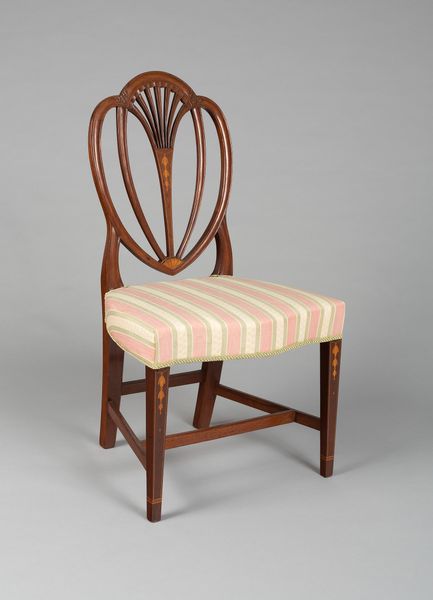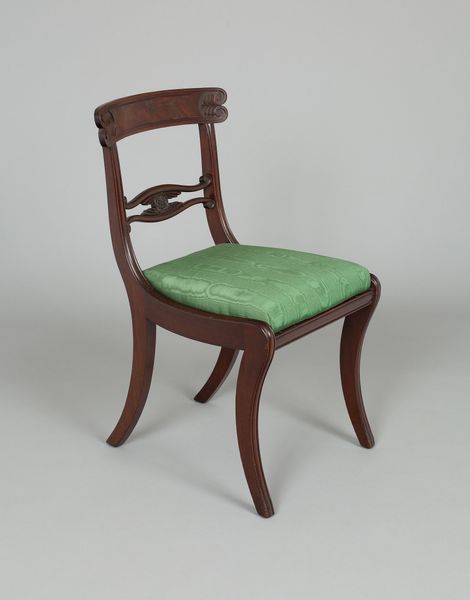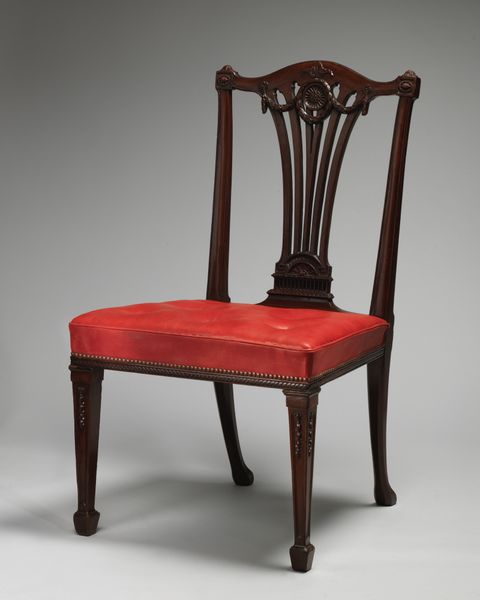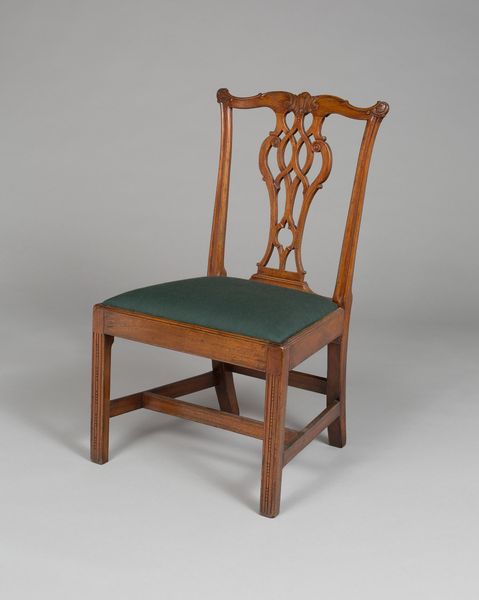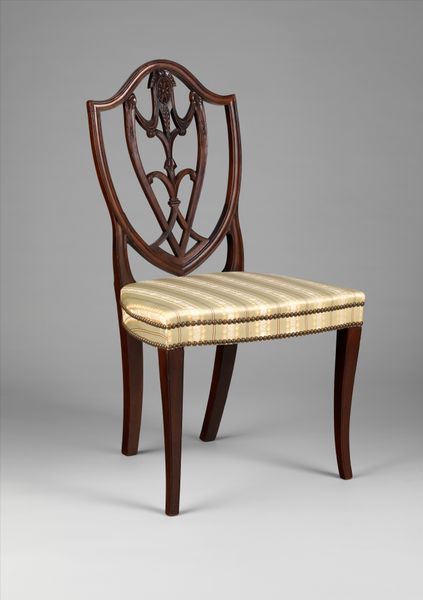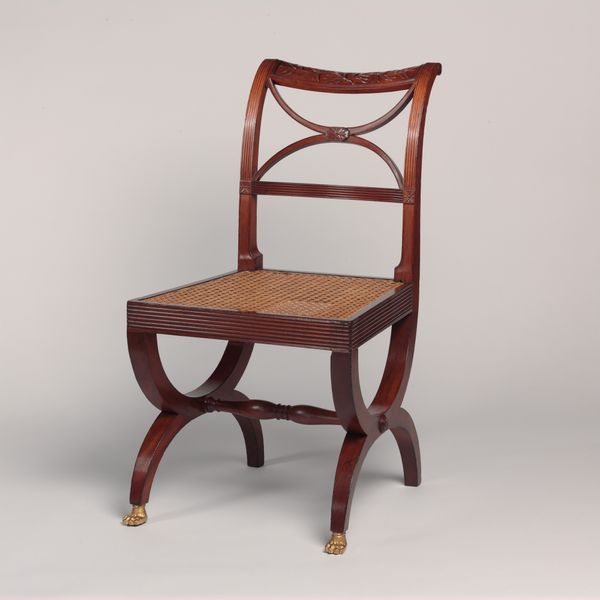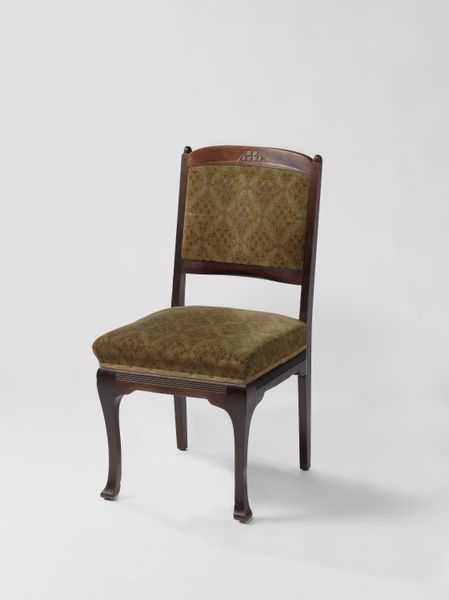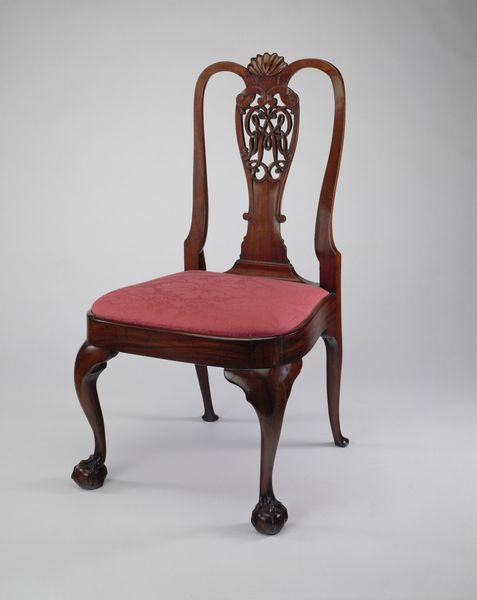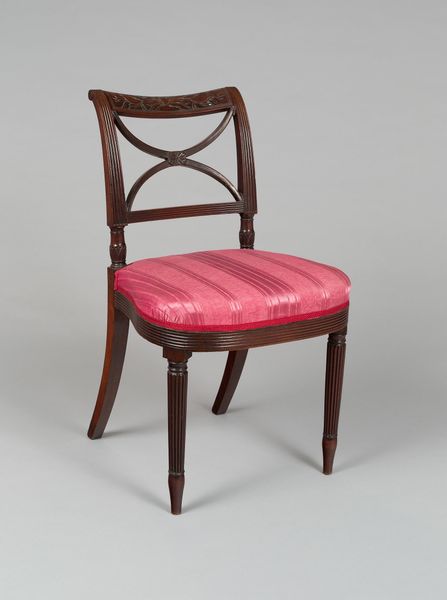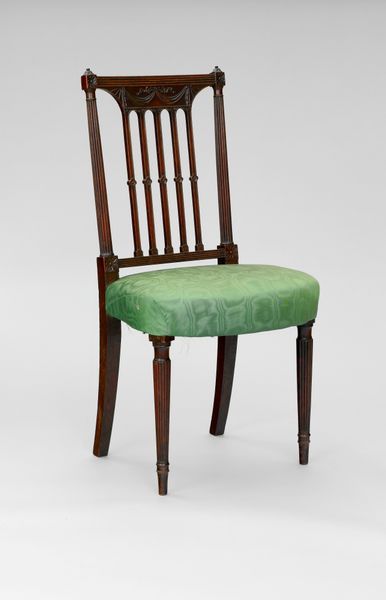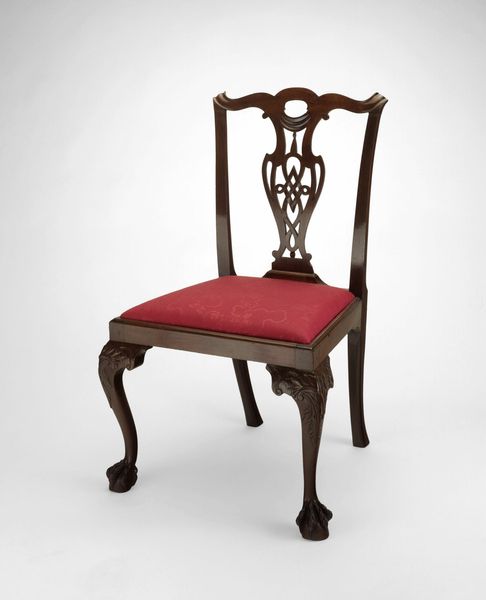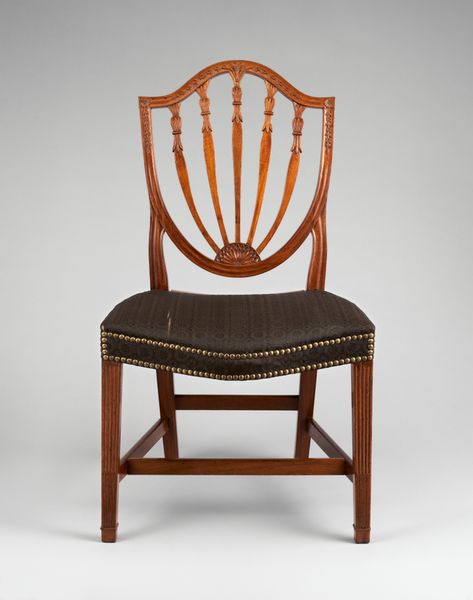
wood
#
neoclacissism
#
furniture
#
form
#
geometric
#
line
#
wood
#
decorative-art
Dimensions: Each: 97.8 × 55.9 × 53.3 cm (38 1/2 × 22 × 21 in.)(overall); seat: 55.9 × 45.7 cm (22 × 18 in.)
Copyright: Public Domain
Curator: This looks surprisingly light and airy for a wooden chair. I’m immediately drawn to its pastel hues. Editor: Indeed. Here we have a “Pair of Chairs,” made anonymously sometime between 1790 and 1800. You can currently find them in The Art Institute of Chicago. These chairs perfectly embody the Neoclassical movement. Curator: Neoclassical! That explains so much. That shell motif in the back is clearly a symbol appropriated from classical antiquity, and reimagined for domestic use. Editor: Exactly! And note how it is echoed throughout the chair—the seat itself is upholstered in fabric with stripes, offering a different interpretation of the shell’s form through a focus on line. Semiotically, this reiteration enhances its visual impact. Curator: Right, like an ancient emblem reworked for everyday life! Furniture became a vehicle for carrying those cultural memories into the home. What would it have meant to those using this chair daily, surrounded by classical imagery? It brings history so intimately close! Editor: Its form also suggests order, stability and reason which were highly prized virtues of the Neoclassical era. It reflects those values of rational thought prevalent then, not just visually but materially. Curator: That's it! Even the chair’s construction conveys purpose, control, discipline... though I admit I want to soften the green upholstery and change out the fringe. Still, one can almost sense a conversation with the past. Editor: Agreed, the wood presents its own form of structure which communicates similar ideological aims and social desires, to uphold societal constructs of that time through every aspect, every formal detail. Curator: Seeing art and design functioning this way gives a richer understanding of that period; something profound about having this kind of historical reference around when simply receiving visitors, having a tea, etc. Editor: Right, decoding artworks through objects like chairs and other decorative arts allows us to access cultural underpinnings—even mundane elements of historical material can contain fascinating narrative traces. Curator: Yes. Thinking about its past contexts invites richer contemplations. Editor: I wholeheartedly concur; the more we analyze details of artistic execution and style, the closer we become to understanding how we continuously make sense of objects through structure and function.
Comments
No comments
Be the first to comment and join the conversation on the ultimate creative platform.
